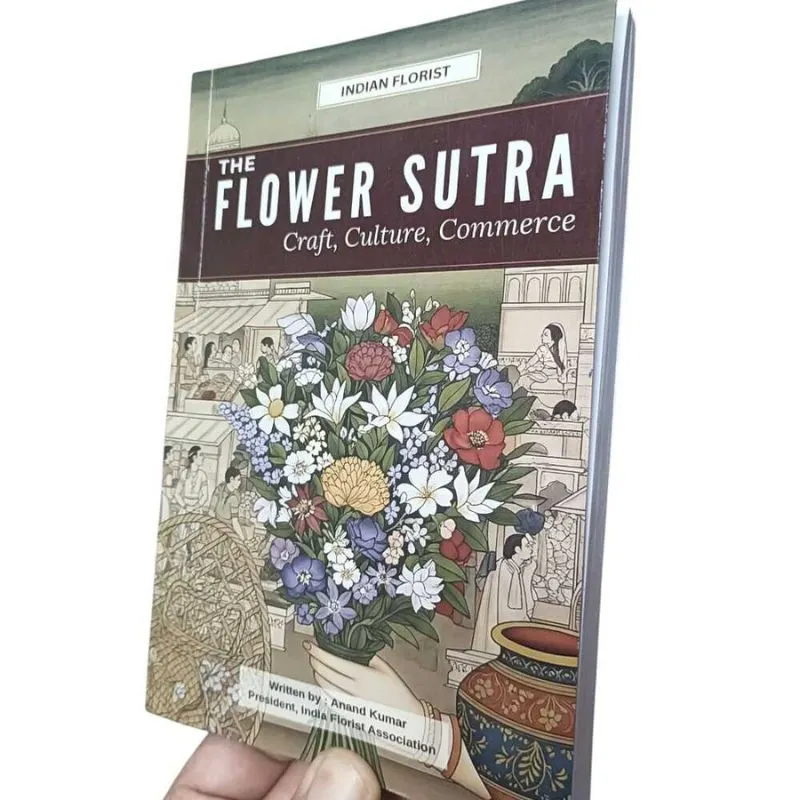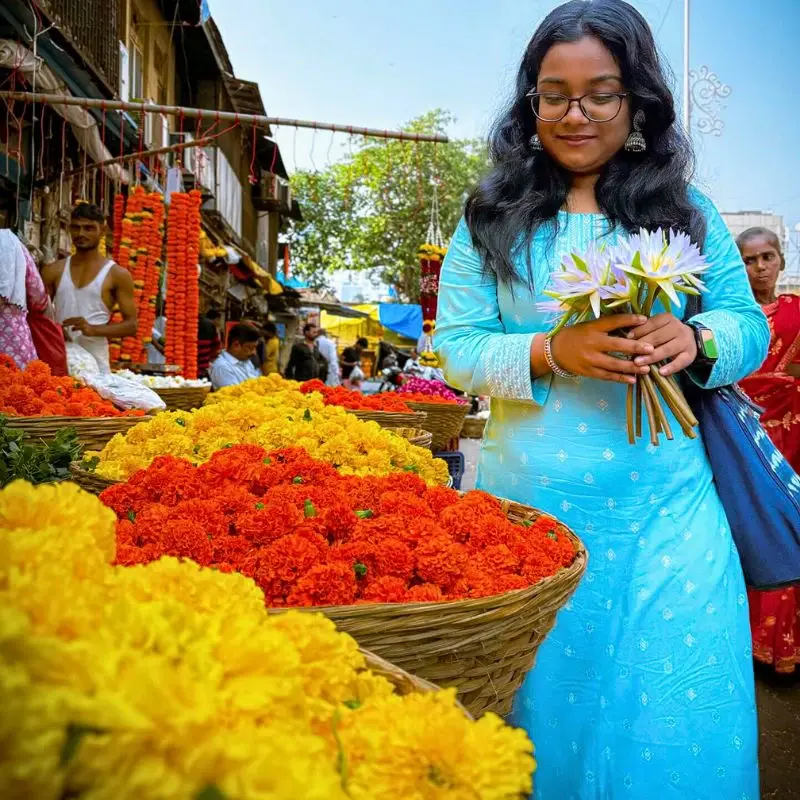When people talk about "rags-to-riches" stories in Indian agriculture, they often default to myth. Srikanth Bollapally's rise doesn't need embellishment. Born into a farmer's household in Telangana, he left school after Class 10 to support his family and moved to Bengaluru at sixteen. There he learned the floriculture trade end to end - cultivation, harvest discipline, grading, marketing, even the rhythm of exports, while earning just $12 a month. Those early years in greenhouses and wholesale yards were not glamorous, but they furnished him with a practical education few classrooms could match.
Debt, Duty, and a One-Way Ticket to Bengaluru
Srikanth was born in a farmer's family in the Nizamabad district of Telangana, where debt and thin margins often determined the month. After Class 10, his parents could not fund further education. At 16 he left for Bengaluru, stayed with relatives, and took a job at a flower farm for a salary of $12. The money was meagre and the hours long - 18 to 20 hours a day during peak stretches. But the apprenticeship was total. He learned cultivation schedules, greenhouse hygiene, harvest discipline, post-harvest handling, grading, market dynamics, and even the basics of export documentation. Those first two years were not a detour; they were the foundation.
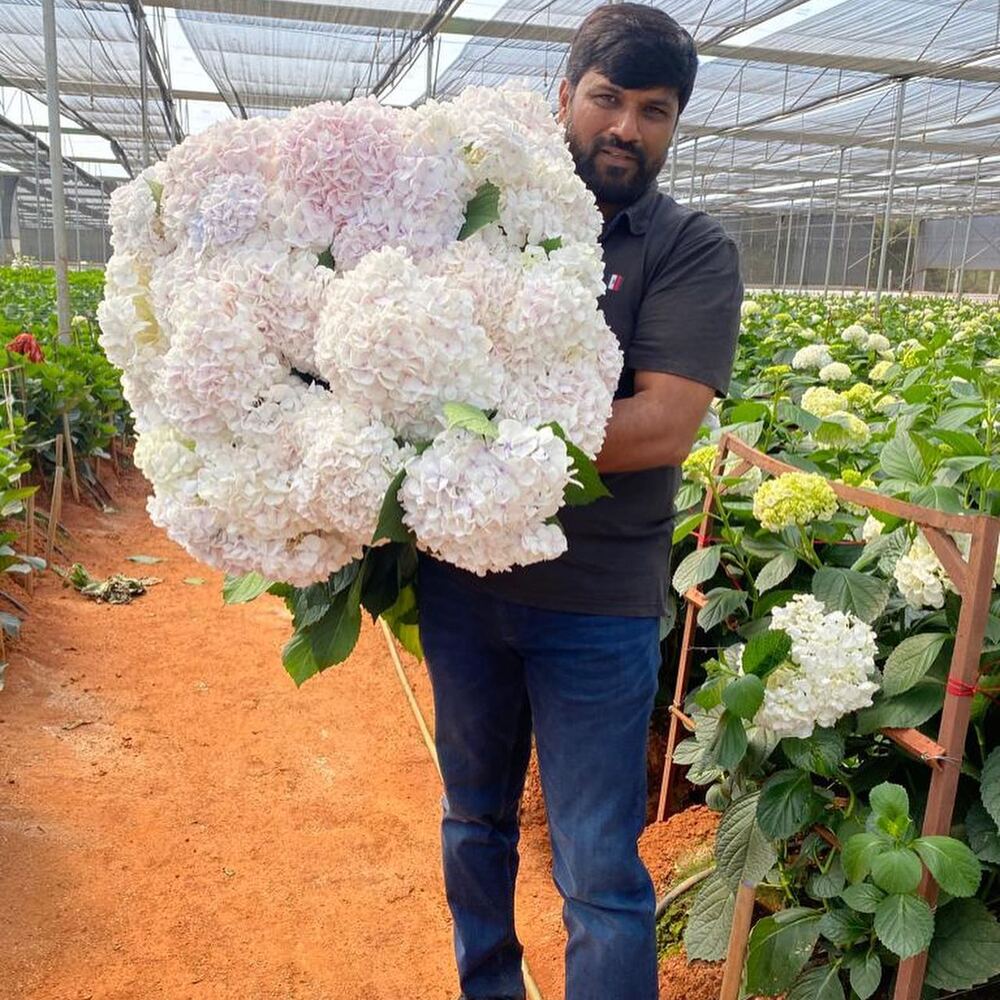
The First Venture: Om Sri Sai Flowers and a Street-Level MBA
By his late teens, he invested savings and small family loans - about $225 - into a tiny, 200 sq-ft, operation in Wilson Garden: Om Sri Sai Flowers. The shop became an education in demand shaping. He sources from growers and wholesale yards at dawn, then packs and delivers to hotels, wedding planners, and retailers himself.
Within the first year, he hit $5,700 in turnover; the next year, he doubled it; by 25, the figure crossed $550,000. Trading hardened the instincts that still guide his decisions: the market rewards uniformity, reliability, and speed more than novelty. It also revealed a structural gap - domestic demand was growing faster than a consistent, high-quality supply. If he could engineer reliability in a notoriously perishable category, he could scale far beyond a storefront.
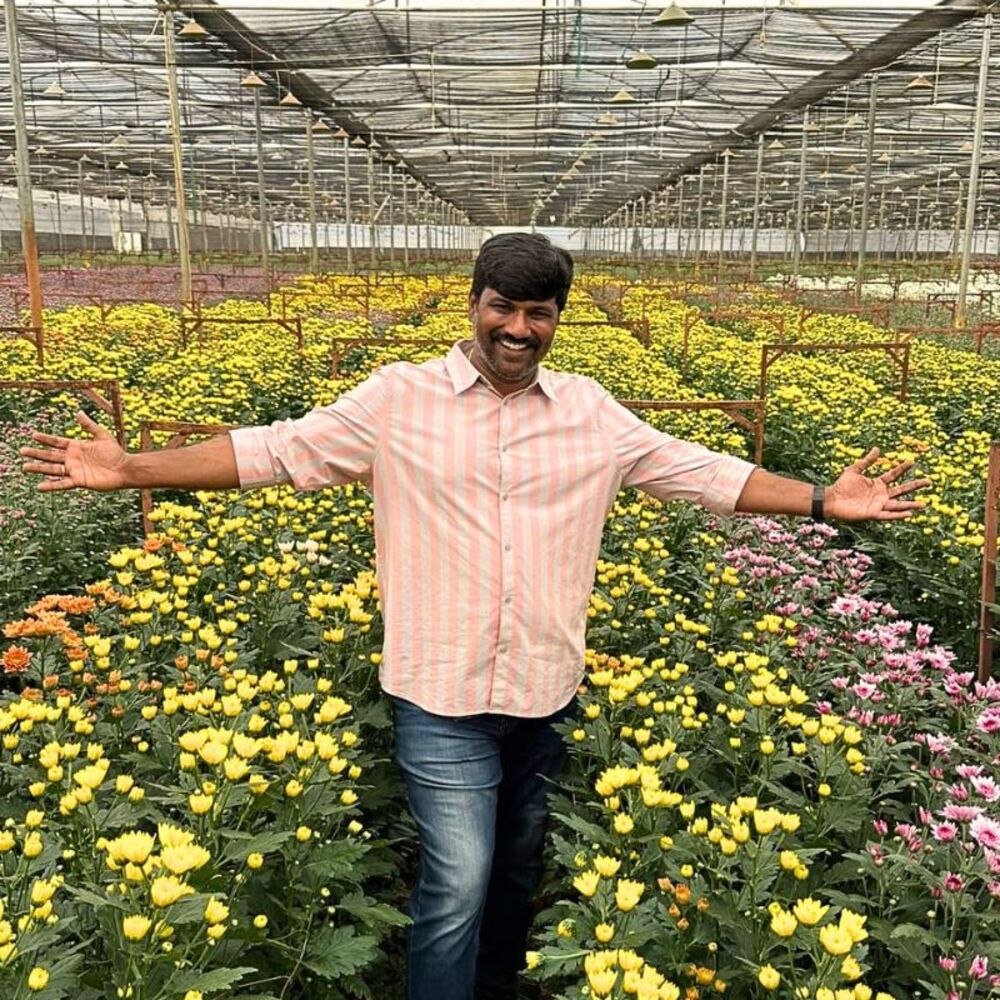
From Trading to Protected Cultivation
Through the late 1990s and early 2000s, he ran the retail-cum-trading business for roughly a decade. He bought 10 acres in Tubagere, Doddaballapura taluk (Bengaluru Rural), and moved into protected cultivation under the banner Vensai Floritech, with Srikanth Farms as the underlying entity.
The first blocks were six acres under greenhouse and shade structures - enough to learn, fail safely, correct, and standardize. He matched varieties to microclimate, invested in fertigation, climate control, and designed post-harvest rooms so that field heat could be pulled down within minutes of cutting.
Between 2009 and 2010, he expanded by another 30 acres around Tubagere and added nearly 10 more acres in Coonoor (Nilgiris) to diversify climate risk and add lilium/carnation benches. Financing mixed pragmatism with courage: bank loans of roughly $1.7 Mn to fund structures and systems, and a series of National Horticulture Board projects that provided about $300,000 in subsidies across cold chain, infrastructure, and logistics.
In 2014, a 50% subsidy supported a transport vehicle to tighten the farm-to-market window. The result was a repeatable manufacturing line for quality stems.
What He Grows and Why It Works
Srikanth's commercial backbone has been a pragmatic quartet - rose, gerbera, carnation, and gypsophila - crops that justify capital outlay and reward disciplined SOPs. Around this core, he consistently maintains about 18 varieties in commercial rotation, while having trialed 60+ other varieties over the years to pressure-test genetics against local realities: heat spikes, daylength, fungal pressure, and consumer preference.
Across reporting periods, his total farmland is cited at nearly 53 acres, with about 40 under flowers in Karnataka and additional benches in the Nilgiris. He complements in-house production by sourcing from Ooty, Kodaikanal, and Bengaluru's hinterland to bridge demand spikes, and when needed, by importing specialty material from Thailand, Australia, New Zealand, and the Netherlands.
Srikanth treats post-harvest as the profit center. Stems are cut with sharp tools for clean xylem, rehydrated immediately, and pre-cooled to pull down field heat, then staged in cold rooms around 12-15°C to stabilize tissues before grading and bunching (typically 20-stem bunches for roses). This regimen extends vase life and reduces claims, enabling him to sell farther from the farm and to more demanding customers. He is blunt about the stakes: in cut flowers, you don't "make money" when the crop is harvested - you start losing it if pre-cooling and hydration are sloppy.
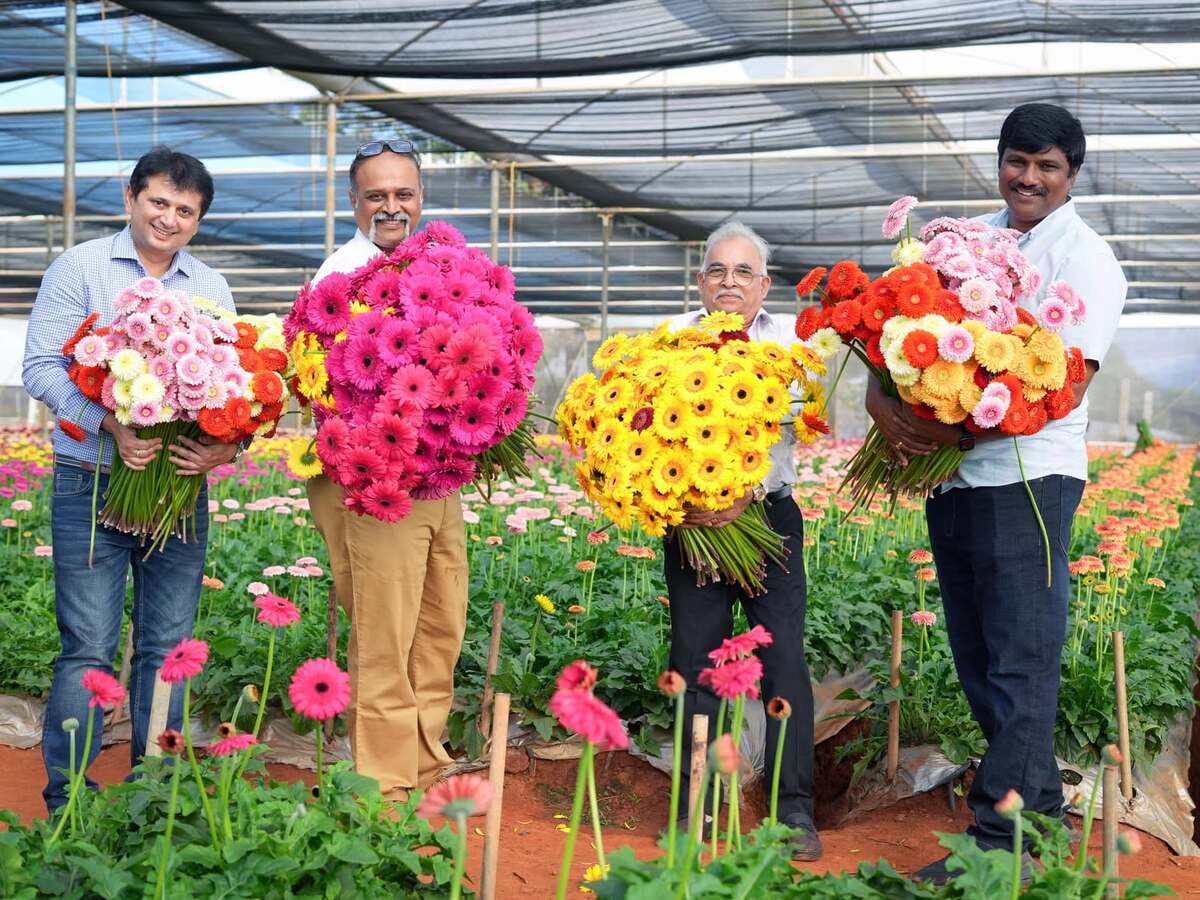
People, Process, and Production Culture
At full stride, the operation directly employs 200-300 people across farm and office functions, with housing and meals for a significant portion of the on-farm workforce. A large share of employees are women from local communities - an intentional choice that stabilizes quality and spreads income in rural Karnataka.
Training is not a one-off orientation but a standing system. Standard operating procedures are simplified and repeated until quality is not personality-dependent. Where labor is structurally scarce, he deploys automation judiciously - dosing units, climate controllers, drone spraying for monitoring and crop protection - so people can focus on higher-value tasks rather than fighting equipment.
Growing the Sustainable Way
Sustainability, for him, is not a slogan but a set of guardrails. Vensai's farms run drip-sprinkler irrigation, large-format rainwater harvesting (the Tubagere blocks can require ~400,000 liters a day, and stored rainwater can cover seven to eight months in good years), vermicomposting of floral residues, solar-powered systems, and integrated pest management to moderate chemical pressure.
He argues that Indian agriculture cannot repeat Europe's soil-exhaustion arc; the industry must credit soil as an inheritance, not a consumable. He urges growers to re-embrace time-tested inputs like jeevamrut and panchagavya alongside modern fertigation and climate tech, not as nostalgia but as risk management for the next decade.
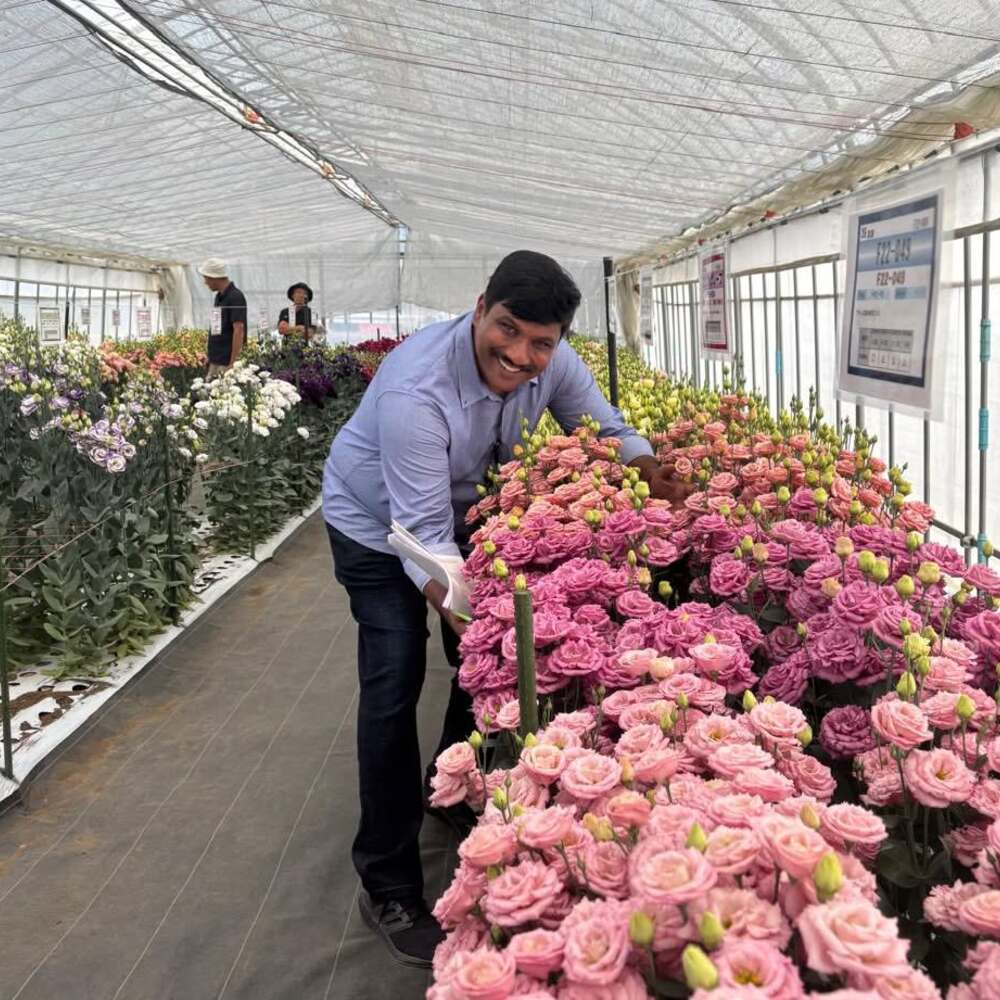
Meeting India's Demand Engine To Reaching Institutions and Advocacy
Before the pandemic, Dubai, Malaysia, Singapore, Australia, and other Asian destinations were attractive targets for Indian stems. Post-COVID, air-freight escalations (often cited at 200% over pre-pandemic baselines) and add-on taxes compressed margins.
Srikanth did not argue with arithmetic; he rebalanced. The domestic market - weddings, modern retail, e-commerce florists - was compounding. By doubling down on consistency and cadence, he could ship more inside India at rational margins while keeping export options alive when lanes priced in growers' favor. The lesson is tactical, not ideological: plant to the market that pays, then revisit routes as freight normalizes.
Srikanth's influence extends beyond his own greenhouses. He serves as President of the Growers Flower Council of India (GFCI), an umbrella body for growers and allied stakeholders that advocates for fit-for-purpose infrastructure, workable standards, and policies that reward quality rather than paperwork. He has been outspoken about the market erosion triggered by plastic/artificial flowers, pressing for consumer education and fair rules so that authentic, fresh floriculture is not undercut by bio-degradable look-alikes.
He is also the Director at the International Flower Auction Bangalore (IFAB), where neutral price discovery, grading norms, and dispute mechanisms help both small and large growers transact with confidence.
Family Support to Reach the Heights
Behind the numbers is a family architecture that keeps the machine steady. His wife, Raga Srivanthi (Saravanthi), has long managed office accounts and the marketing operations of the trading arm, Om Sri Sai Flowers. The couple's children - Mokshashree and Harsha Vardhan - have been closely attached to the farm, and in recent years, moved abroad for higher studies.
In 2024, a gesture from industry partners captured the interweave of personal and professional: KF Bioplants and HilverdaFlorist registered a new gerbera named "Moksha Sree" at Floricode - an acknowledgement that blends genetics, collaboration, and a family's journey in one cultivar.
Depending on the reporting window, profiles place Srikanth's annual turnover around $7.8 million, supported by 50-53 acres of farmland (with nearly 40 acres under flowers in Karnataka at times) and additional climate-complementary benches in the Nilgiris.
The numbers are notable, but what matters is how they were earned: a decade of trading to understand demand; a calibrated jump into structures; relentless post-harvest discipline, steady capital cycles; and the humility to walk away from varieties that don't fit local physiology or market timing. He has also visited more than 20 flower hubs and auction centers worldwide since his early twenties, importing know-how alongside planting material, and converting exposure into process - not vanity.

What Newcomers Should Actually Do
Many readers will ask for a playbook. Srikanth's story offers a clear one, though he would frame it as obligations rather than tips. Start with a ruthless site - crop audit: water quality, temperature bands, disease pressure, and day length must dictate genetics and structure. Engineer post-harvest before you plant: hydration points, pre-coolers, and cold-rooms are not "nice to have," they are the fulcrum of profit.
Build the market while you build the benches: commit to relationships with planners, retailers, and e-commerce platforms so that acreage grows into demand, not ahead of it. Be candid about capex and working capital: protected cultivation is capital-intensive and unforgiving; the only hedge is the discipline you show every single day. Finally, attach yourself to institutions - auctions, breeder partnerships, and grower councils - because markets that pay for quality are built, not found.
Inspiring and Brightening the Future of Indian Floriculture
Indian floriculture is at an inflection point: domestic demand is deepening, e-commerce has mainstreamed flower-buying beyond festival windows, and greenhouse technology is more accessible than ever. Yet margins will remain tight fr growers who underinvest in post-harvest or treat soil as a short-term input.
Srikanth Bollapally's career offers a counterexample with durable lessons. He transformed a perishable product into a repeatable business by controlling what could be controlled - environment, handling, logistics, cadence - and by building the market architecture that rewards those controls. He did not chase the spotlight; he built a system. That is why, decades after opening a 200 sq-ft shop, his flowers still move on time, his workers still find skilled employment, and his counsel still carries weight at the places where India's floriculture future is negotiated.

.jpg)
